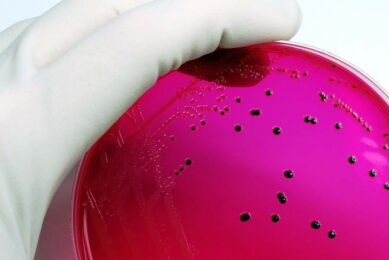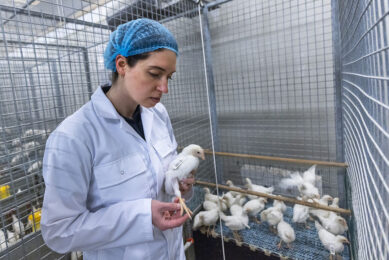US: Harmful bacteria in two-thirds of chicken
Consumer Reports’ latest test of fresh, whole broilers bought in 22 states reveals that two-thirds of birds tested harbored salmonella and/or campylobacter, the leading bacterial causes of food-borne disease.
Consumer Reports has been measuring contamination in store-bought chickens since 1998. The recent test shows a modest improvement since January 2007, when the magazine found these pathogens in 8 of 10 broilers, but the numbers are still far too high.
The findings suggest that most companies’ safeguards are inadequate. Consumer Reports also found that most disease-causing bacteria sampled from the contaminated chicken were resistant to at least one antibiotic, potentially making any resulting illness more difficult to treat.
“Consumers still need to be very careful in handling chicken, which is routinely contaminated with disease-causing bacteria,” said Dr. Urvashi Rangan, Director of Technical Policy at Consumers Union, non-profit publisher of Consumer Reports. “Our tests show that campylobacter is widespread in chicken, even in brands that control for salmonella. While one name brand, Perdue, and most air-chilled chickens, were less contaminated than others, this is still a very dirty industry that needs better practices and tighter government oversight.”
Consumer Reports had an outside lab test 382 chickens bought last spring from more than 100 supermarkets, gourmet- and natural-food stores, and mass merchandisers in 22 states. Among the findings:
– Campylobacter was in 62% of the chickens, salmonella was in 14%, and both bacteria were in 9% Only 34% of the birds were clear of both pathogens. That’s double the percentage of clean birds Consumer Reports found in its 2007 report but far less than the 51% in the 2003 report.
– Among the cleanest overall were organic “air-chilled” broilers (a process in which carcasses are refrigerated and may be misted, rather than dunked in cold chlorinated water). About 60% were free of the two pathogens.
– Perdue was found to be the cleanest of the brand-name chicken: 56% were free of both pathogens. This is the first time since Consumer Reports began testing chicken that one major brand has fared significantly better than others across the board.
– Tyson and Foster Farms chickens were found to be the most contaminated; less than 20% were free of either pathogens.
– Store-brand organic chickens had no salmonella at all, but only 43% of those birds were also free of campylobacter.
– Among all brands and types of broilers tested, 68% of the salmonella and 60% of the campylobacter organisms analyzed showed resistance to one ore more antibiotics. All of the antibiotics were effective against 32% of salmonella samples and 40% of the campylobacter samples, as compared to just 16 and 33% in 2007.
Although Perdue chickens were cleaner than other big brands in the tests, and most “air-chilled” organic birds were especially clean, Consumer Reports’ tests are a snapshot in time and no type has been consistently low enough in pathogens to recommend over all others. Buying cleaner chicken may improve consumers’ odds if they fail to prepare chicken carefully, it reports.
Source: Consumer Reports













